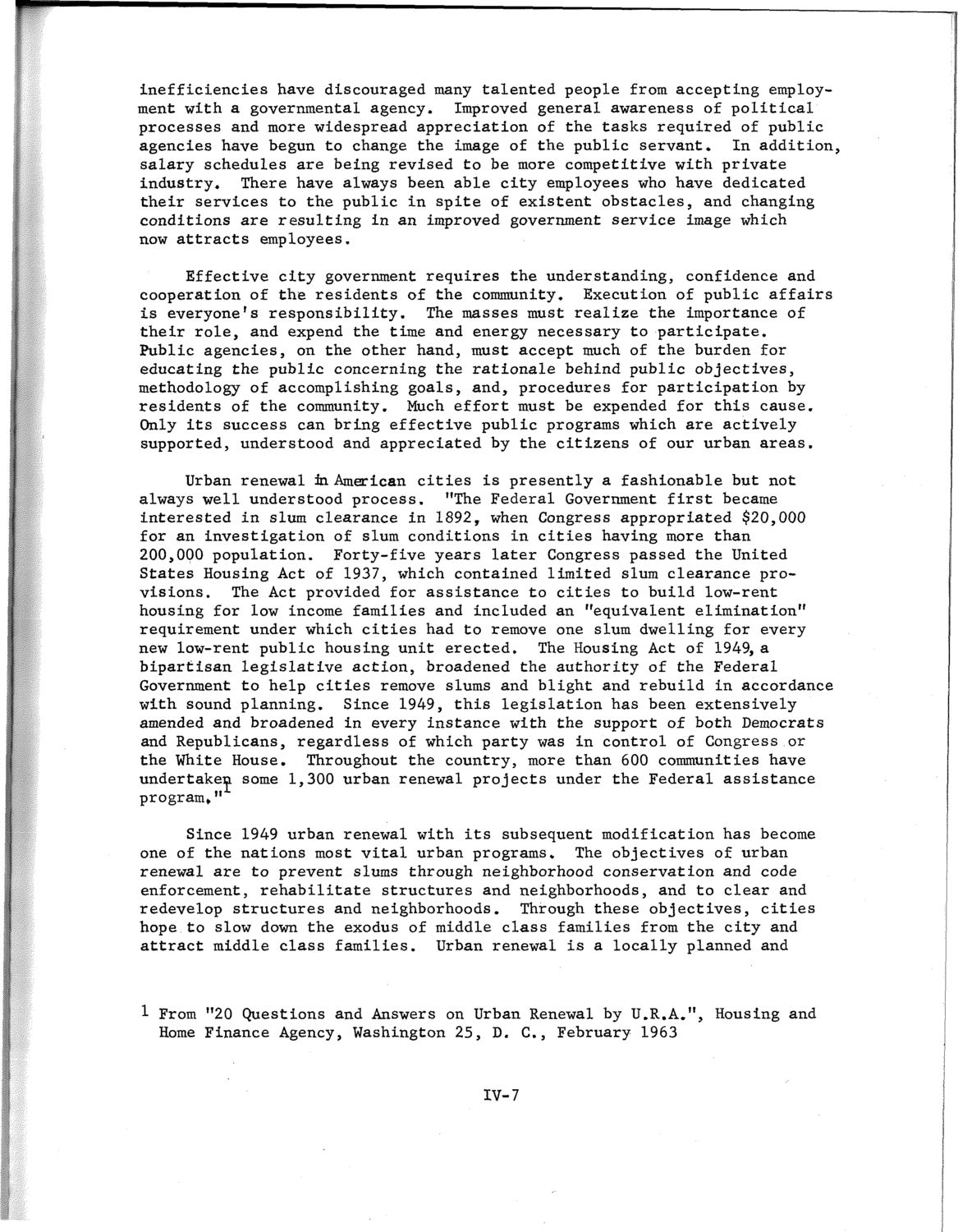| |
| |
Caption: SWE - Proceedings of the First International Conference of Women Engineers and Scientists
This is a reduced-resolution page image for fast online browsing.

EXTRACTED TEXT FROM PAGE:
inefficiencies have discouraged many talented people from accepting employment with a governmental agency. Improved general awareness of political processes and more widespread appreciation of the tasks required of public agencies have begun to change the image of the public servant. In addition, salary schedules are being revised to be more competitive with private industry. There have always been able city employees who have dedicated their services to the public in spite of existent obstacles, and changing conditions are resulting in an improved government service image which now attracts employees. Effective city government requires the understanding, confidence and cooperation of the residents of the community. Execution of public affairs is everyone's responsibility. The masses must realize the importance of their role, and expend the time and energy necessary to participate. Public agencies, on the other hand, must accept much of the burden for educating the public concerning the rationale behind public objectives, methodology of accomplishing goals, and, procedures for participation by residents of the community. Much effort must be expended for this cause. Only its success can bring effective public programs which are actively supported, understood and appreciated by the citizens of our urban areas. Urban renewal in American cities is presently a fashionable but not always well understood process. "The Federal Government first became interested in slum clearance in 1892, when Congress appropriated $20,000 for an investigation of slum conditions in cities having more than 200,000 population. Forty-five years later Congress passed the United States Housing Act of 1937, which contained limited slum clearance provisions. The Act provided for assistance to cities to build low-rent housing for low income families and included an "equivalent elimination" requirement under which cities had to remove one slum dwelling for every new low-rent public housing unit erected. The Housing Act of 1949, a bipartisan, legislative action, broadened the authority of the Federal Government to help cities remove slums and blight and rebuild in accordance with sound planning. Since 1949, this legislation has been extensively amended and broadened in every instance with the support of both Democrats and Republicans, regardless of which party was in control of Congress or the White House. Throughout the country, more than 600 communities have undertaken some 1,300 urban renewal projects under the Federal assistance program*" Since 1949 urban renewal with its subsequent modification has become one of the nations most vital urban programs. The objectives of urban renewal are to prevent slums through neighborhood conservation and code enforcement, rehabilitate structures and neighborhoods, and to clear and redevelop structures and neighborhoods. Through these objectives, cities hope to slow down the exodus of middle class families from the city and attract middle class families. Urban renewal is a locally planned and 1 From "20 Questions and Answers on Urban Renewal by U.R.A.", Housing and Home Finance Agency, Washington 25, D. C., February 1963 IV-7
| |